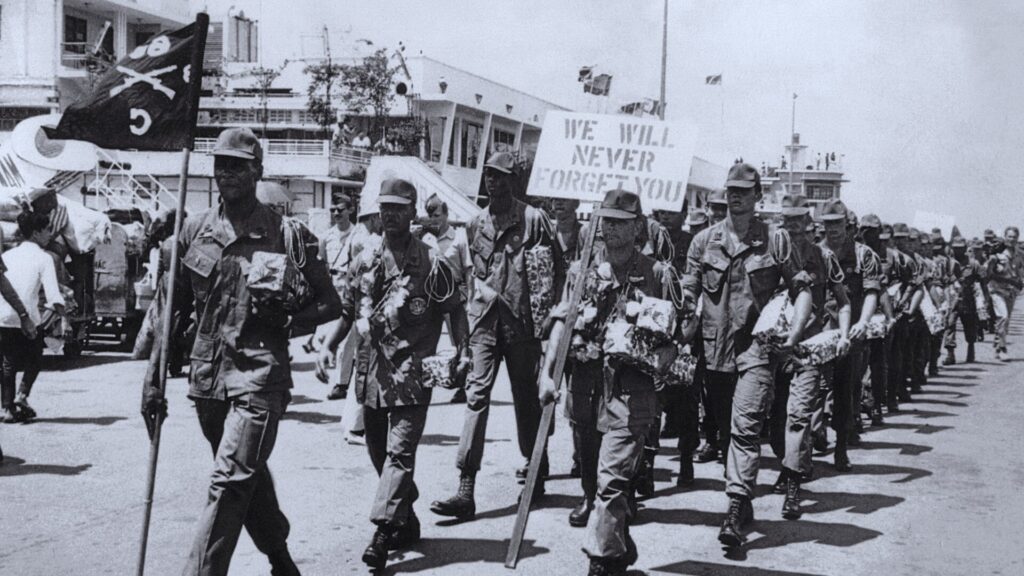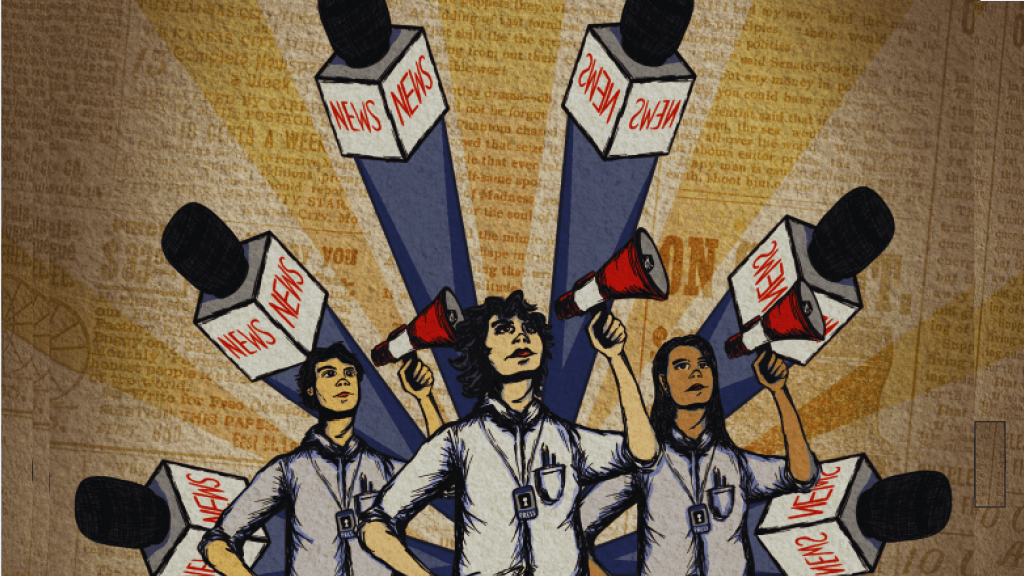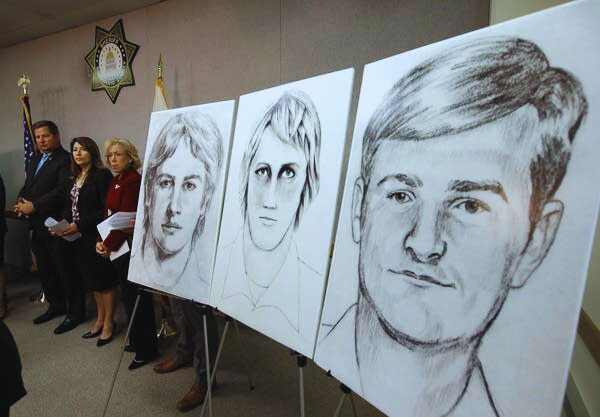Introduction
The 1970s marked a dark period in criminal history with an alarming rise in serial killers. This article delves into the intricate web of factors that contributed to this phenomenon, exploring the societal, psychological, and historical landscape of the time.
The Historical Tapestry
We are unraveling the socio-historical factors behind the surge.
The Post-Vietnam War Era

In the aftermath of the Vietnam War, a profound transformation gripped society, leaving an indelible mark on the fabric of American life. The post-Vietnam War era ushered in complex challenges, creating an environment where the seeds of darkness took root.
The Psychological Fallout
The war’s psychological toll was staggering. Veterans returned home bearing the scars of combat, grappling with the horrors they had witnessed. The question lingers: why were there so many serial killers in the 70s? The answer lies partly in the profound impact of war trauma on individuals’ mental states.
Reintegration Struggles
The return to civilian life proved challenging for many veterans. Amidst societal shifts and cultural upheavals, some found it difficult to reintegrate. Why were there so many serial killers in the 70s? The struggle to adapt to “normalcy” created a breeding ground for psychological distress.
The Desensitization Effect
War desensitizes individuals to violence. Exposure to brutality on the battlefield can alter perceptions of morality, potentially blurring the lines between right and wrong. This desensitization may have played a role in the emergence of individuals capable of heinous acts.
Economic Disarray
The economic repercussions of the war added another layer to the complexities of the time. Veterans faced difficulties securing employment, contributing to financial instability. Why were there so many serial killers in the 70s? Economic struggles heightened stress levels, pushing some to the brink.
Escapism and Coping Mechanisms
Facing a society that seemed to have moved on, some individuals sought solace in dark corners. Escapism took various forms, including indulgence in violent fantasies. This escape from reality may have manifested in acts of serial violence.
Societal Alienation
The war bred a sense of alienation. The disconnection from mainstream society created pockets where deviant behavior could flourish unchecked. This alienation contributed to the rise of individuals who operated on the fringes, evading detection.
Navigating the Shadows
Understanding the interplay of psychological, social, and economic factors is crucial in comprehending the surge in serial killers during the 70s. The post-Vietnam War era set the stage for a perfect storm of circumstances that fueled this dark chapter in history.
Media Influence and Sensationalism

In the labyrinth of the 1970s, media played a pivotal role in shaping perceptions, molding narratives, and, unwittingly, amplifying the specter of serial killers. The influence of media and sensationalism during this era was a powerful force that both reflected and contributed to the societal psyche.
The Rise of Sensationalism
The 1970s witnessed a surge in sensationalized media coverage, with serial killers becoming macabre celebrities. The question echoes: why were there so many serial killers in the 70s? The media’s penchant for sensationalism propelled these criminals into the spotlight, creating an environment ripe for obsession.
Fear as a Selling Point
News outlets, hungry for higher ratings and circulation, capitalized on fear. Serial killers, often depicted as elusive and cunning, became sensationalized figures. Why were there so many serial killers in the 70s? The fear they instilled became a marketable commodity, drawing audiences in with morbid fascination.
Copycat Phenomenon
As media coverage intensified, an unintended consequence emerged—the birth of the copycat phenomenon. Some individuals, seeking notoriety, replicated the crimes they saw sensationalized in the news. This dark emulation further fueled the epidemic of serial killings.
Glamorization of Violence
Media portrayal often glamorized the lives of serial killers. In-depth coverage delved into their motives, methods, and, disturbingly, personal lives. Why were there so many serial killers in the 70s? The inadvertent glorification of these criminals may have encouraged others to seek infamy through similar means.
Impact on Public Perception
Media coverage sculpted public perceptions, fostering an environment of fear and mistrust. The continued focus on these crimes created a distorted reality, where the prevalence of serial killers seemed more widespread than it may have been.
Role of Television and Cinema
The burgeoning television and film industry also contributed to the phenomenon. Serial killers became recurring characters in crime dramas, further embedding the archetype in the public consciousness.
Unraveling the Web
Navigating the intricate relationship between media influence and the surge in serial killers during the 70s provides insights into the dark dance between perception and reality. As we probe the shadows of history, it becomes clear that media, in its quest for gripping narratives, inadvertently became a player in the unsettling narrative of that era.
The Psychological Abyss
Understanding the disturbed minds that emerged during this era.
Lack of Profiling Techniques

The 1970s presented law enforcement with a formidable challenge: a lack of sophisticated profiling techniques to apprehend serial killers effectively. This deficiency in criminal profiling during that era played a significant role in allowing these predators to operate with impunity.
The Absence of Advanced Profiling
During the 70s, profiling as we know it today was in its infancy. Why were there so many serial killers in the 70s? The absence of advanced profiling tools meant that law enforcement often found themselves grappling in the dark, without the nuanced understanding of criminal behavior crucial for apprehension.
Reactive Rather Than Proactive
Law enforcement operated in a reactive mode. Investigations unfolded after a crime had been committed, with minimal ability to predict or prevent future offenses. The lack of proactive profiling allowed some serial killers to remain undetected for extended periods.
Limited Behavioral Analysis
Behavioral analysis, a cornerstone of modern criminal profiling, was constrained in the 70s. Why were there so many serial killers in the 70s? The limited understanding of behavioral nuances hindered investigators’ ability to create accurate offender profiles, making it challenging to narrow down suspects.
Challenges in Identifying Patterns
The absence of a standardized approach to analyzing crime scenes and identifying patterns hindered investigations. Serial killers often left distinctive signatures, but without a systematic profiling method, these patterns were not effectively recognized.
Evolving Nature of Serial Crimes
As serial crimes evolved, law enforcement struggled to keep pace. The lack of comprehensive profiling techniques meant that investigators were often caught off guard by the changing tactics and behaviors of serial killers.
Shift Toward Profiling Advancements
In the aftermath of the 70s, the limitations became evident. The subsequent decades saw a paradigm shift, with advancements in criminal profiling techniques and a more proactive approach to identifying and apprehending serial killers.
Bridging the Profiling Gap
Understanding the constraints of the past allows us to appreciate the strides made in criminal profiling. The lack of profiling techniques during the 70s underscored the critical need for innovation and advancement in law enforcement strategies.
Mental Health Stigma

The 1970s bore witness to a pervasive stigma surrounding mental health, contributing significantly to the complex landscape that allowed a rise in serial killers. This stigma casts a shadow over individuals grappling with mental health issues and hinders efforts to address the root causes of their disturbed behavior.
Taboos and Misunderstandings
Why were there so many serial killers in the 70s? One contributing factor was the prevalence of taboos and misunderstandings surrounding mental health. The prevailing societal attitude often dismissed mental health concerns as weaknesses or moral failings, perpetuating a culture of silence.
Reluctance to Seek Help
The stigma attached to mental health issues dissuaded individuals from seeking the help they desperately needed. Fear of judgment and societal ostracization prevented many from openly discussing their struggles or seeking professional assistance.
Lack of Resources and Support
The 1970s were marked by a dearth of mental health resources and support systems. As a result, those grappling with psychological disorders faced limited avenues for treatment or assistance, exacerbating the challenges they encountered.
Impact on Law Enforcement
Law enforcement, too, operated within the confines of this stigma. Why were there so many serial killers in the 70s? The reluctance to acknowledge the role of mental health in criminal behavior meant that some perpetrators escaped proper psychological evaluation and intervention.
Cultural Reinforcement
The media and popular culture of the time often reinforced stereotypes and misconceptions about mental health. Serial killers, portrayed as monstrous villains without delving into the psychological underpinnings of their actions, perpetuated a skewed narrative.
Evolution of Mental Health Awareness
In the aftermath of the 70s, there was a gradual shift in societal attitudes towards mental health. Advocacy efforts and increased awareness campaigns started challenging the stigma, paving the way for a more empathetic and understanding approach.
Breaking the Chains of Stigma
Understanding the role of mental health stigma in the proliferation of serial killers during the 70s is crucial. By acknowledging the past, we recognize the strides made in mental health awareness and the ongoing journey toward creating a society that supports and empathizes with individuals facing psychological challenges.
The Legal Landscape
Examining the flaws in the legal system that facilitated these crimes.
Inefficiencies in Investigations

The inefficiencies in investigations during the 1970s stand as a critical aspect in comprehending the surge of serial killers during that era. Various factors, ranging from limited technology to organizational hurdles, contributed to a scenario where some serial killers operated with impunity.
Technological Limitations
Why were there so many serial killers in the 70s? A primary factor was the lack of advanced forensic technology. The tools available to investigators were rudimentary compared to today, making it challenging to gather and analyze evidence effectively.
Communication Barriers
Law enforcement agencies faced communication challenges. The lack of seamless information sharing between jurisdictions hindered collaborative efforts. Why were there so many serial killers in the 70s? The inability to connect dots across different cases allowed some perpetrators to evade capture.
Case Backlogs
A backlog of cases overwhelmed investigative units. The sheer volume of crimes, coupled with limited resources, meant that some cases received insufficient attention. Serial killers exploited this situation, capitalizing on the overwhelmed system.
Limited Coordination
Coordination between different law enforcement agencies was often lacking. Jurisdictional boundaries and territorial disputes hindered the collaborative approach necessary for effectively tackling serial crimes.
Lack of Specialized Units
Dedicated units focused on serial crimes were a rarity. The absence of specialized teams with expertise in profiling and investigating serial killers meant that cases were often handled by general investigators, who may not have had the necessary skills.
Public Perception Challenges
Public expectations and pressure to solve high-profile cases sometimes led to premature conclusions. Why were there so many serial killers in the 70s? Missteps in investigations fueled public skepticism and, in some cases, allowed killers to remain at large.
A Turning Point in Investigations
Acknowledging the inefficiencies in investigations during the 70s highlights the subsequent evolution of law enforcement practices. The challenges faced during that era prompted a reevaluation of investigative techniques, leading to advancements that have significantly improved the ability to apprehend serial killers in the present day.
Sentencing Disparities

The 1970s witnessed a troubling aspect of the criminal justice system: sentencing disparities that contributed to the alarming rise of serial killers. Flaws in the legal landscape, including inconsistent judgments and lenient sentences, played a pivotal role in perpetuating this dark chapter in history.
Varied Judicial Approaches
Why were there so many serial killers in the 70s? A significant factor was the lack of uniformity in judicial approaches to similar crimes. Different judges handed down disparate sentences for comparable offenses, creating an environment where the severity of punishment varied widely.
Leniency and Inconsistency
Some judges displayed leniency towards convicted criminals, allowing them to serve shorter sentences than the severity of their crimes warranted. Why were there so many serial killers in the 70s? The inconsistency in sentencing failed to deter potential offenders, contributing to the escalating trend.
Inadequate Legal Framework
The legal framework of the time struggled to address the nuances of serial crimes. Laws and sentencing guidelines were often ill-equipped to handle the intricacies of multiple, heinous offenses committed by a single individual.
Lack of Specialized Courts
The absence of specialized courts dedicated to handling serial crimes further exacerbated sentencing disparities. General courts, unfamiliar with the complexities of serial killings, sometimes rendered judgments that did not align with the gravity of the offenses.
Impact on Deterrence
The lenient sentences handed down in some cases failed to serve as a deterrent. Why were there so many serial killers in the 70s? Offenders may have perceived a lack of severe consequences, emboldening them to continue their criminal activities.
Public Outcry and Reforms
As the public became increasingly aware of the sentencing disparities, outcry for reforms grew. The shortcomings in the legal system prompted a reassessment of sentencing guidelines and paved the way for improvements in subsequent decades.
Lessons Learned
Examining the sentencing disparities of the 70s underscores the need for a fair and consistent legal system. The reforms that followed this tumultuous era aimed to rectify these disparities, emphasizing the importance of equitable justice in deterring and preventing serial crimes.
The Social Quagmire
Exploring societal dynamics that provided a breeding ground for serial killers.
Decline in Community Cohesion

The 1970s marked a period of societal transformation where the fabric of communities underwent a significant shift, contributing to the rise of serial killers. The decline in community cohesion played a crucial role in creating an environment where predators could operate with a disturbing degree of freedom.
Erosion of Traditional Bonds
Why were there so many serial killers in the 70s? A key factor was the erosion of traditional bonds within communities. Close-knit neighborhoods that once fostered a sense of shared responsibility and vigilance experienced a decline, leaving individuals more isolated and vulnerable.
Fragmentation of Social Networks
Social networks fractured as societal structures evolved. The close connections that might have once acted as a deterrent to criminal behavior weakened, creating gaps that allowed serial killers to operate without the watchful eyes of a community.
Urbanization Challenges
Urbanization trends saw an influx of people into larger cities. The resulting population density made it challenging for individuals to establish meaningful connections with their neighbors, contributing to a sense of anonymity and detachment.
Communication Breakdown
Declining community cohesion often meant a breakdown in communication. People became less likely to share information about unusual behavior or suspicious activities, providing a cloak of invisibility for potential serial killers.
Trust Erosion
Why were there so many serial killers in the 70s? A pervasive sense of mistrust emerged as communities became more fragmented. Suspicion among neighbors replaced the trust that once served as a protective barrier against criminal activities.
Impact on Crime Prevention
The decline in community cohesion had a profound effect on crime prevention. Neighbors who were once invested in each other’s well-being became less likely to collaborate with law enforcement or report unusual occurrences.
Rebuilding Community Bonds
Understanding the role of declining community cohesion during the 70s allows us to reflect on the importance of fostering strong community ties. The subsequent decades have seen efforts to rebuild these bonds, recognizing their pivotal role in maintaining the safety and well-being of society.
Economic Struggles

The economic struggles of the 1970s cast a long and ominous shadow, contributing significantly to the surge in serial killers during that tumultuous era. Economic downturns and widespread financial instability created an environment where desperation and criminal behavior intertwined.
Unemployment and Financial Desperation
Why were there so many serial killers in the 70s? The era was marked by soaring unemployment rates and economic uncertainty. Individuals, grappling with financial desperation, were more likely to resort to criminal activities as a means of survival.
Stress and Mental Health Strain
Economic hardships imposed immense stress on individuals and families. The strain on mental health was palpable, and why were there so many serial killers in the 70s? For some, this strain manifested in acts of extreme violence as a distorted response to economic pressures.
Limited Opportunities
The scarcity of job opportunities and financial resources limited individuals’ options for legitimate avenues of advancement. Some turned to criminal activities, including serial killings, as a perceived means of gaining control or power in a world that seemed increasingly uncertain.
Impact on Social Fabric
Economic struggles strained the social fabric of communities. Neighborhoods faced challenges in maintaining stability, and the breakdown in community cohesion created a breeding ground for criminal elements, including serial killers.
Rise in Criminality
As economic struggles persisted, crime rates escalated. The desperation born from financial instability contributed to an environment where criminality flourished, and some individuals turned to increasingly violent means to navigate their circumstances.
Cyclical Nature of Crime
The economic struggles of the 70s created a cycle where crime and economic hardship reinforced each other. As crime rates rose due to financial desperation, the resulting insecurity further hindered economic recovery.
Lessons from Economic Turmoil
Reflecting on the economic struggles of the 1970s underscores the intricate relationship between societal well-being and crime rates. Addressing economic disparities and providing support during periods of financial hardship are essential components of crime prevention and community well-being.
Conclusion
The 1970s unfolded as a complex tapestry of historical, psychological, legal, and social factors that intertwined to create an environment conducive to the rise of serial killers. Understanding this dark chapter in history is essential for preventing its recurrence.
Read also: Why Were Free Trade Zones Created in China? Economic Tapestry
FAQs
What distinguishes a serial killer from other criminals?
Serial killers commit multiple murders with a cooling-off period between each crime, driven by psychological motives.
Did the 70s see an increase in other types of crimes too?
While serial killings gained notoriety, the 70s also witnessed a surge in various crimes, reflecting societal unrest.
How did law enforcement adapt to the rise of serial killers?
The 70s prompted advancements in criminal profiling and investigative techniques to address the growing threat.
Were there any infamous serial killers from the 70s?
Yes, notorious figures like Ted Bundy and John Wayne Gacy rose to infamy during this era.
Did societal attitudes towards mental health change after the 70s?
The 70s laid the groundwork for shifting perceptions around mental health, leading to increased awareness and advocacy.
What preventive measures have been implemented since the 70s to curb serial killings?
Post-70s, advancements in forensic technology, profiling, and mental health awareness have significantly contributed to prevention.




